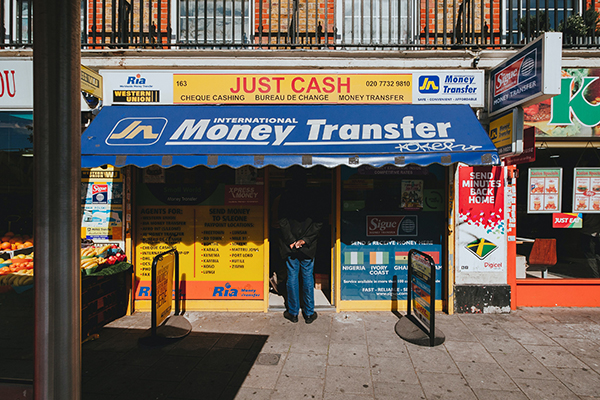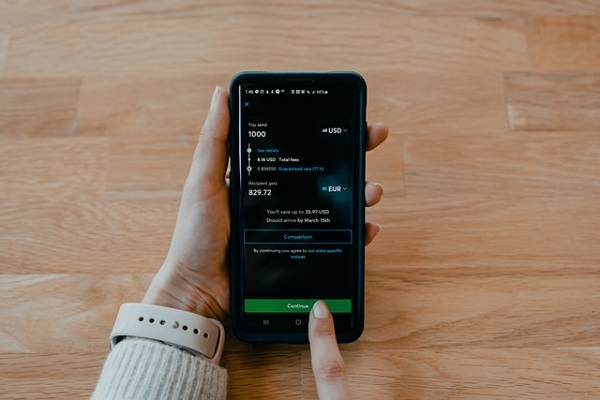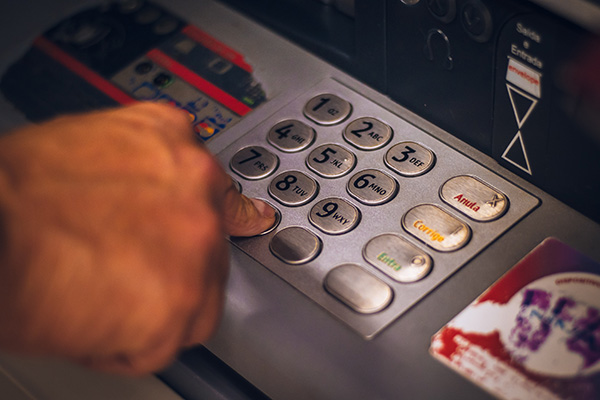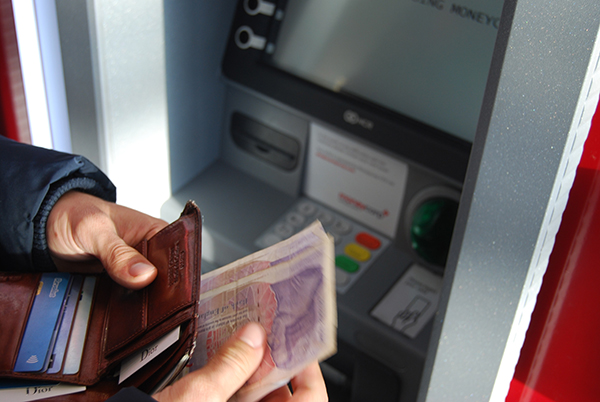
International Telegraphic Money Transfers: The Best Ways to Send Money
If you live abroad, finding the best and cheapest way to transfer money internationally between bank accounts in different countries is likely one of your top concerns. Whether you’re sending money to yourself using two different accounts or transferring funds to a family member overseas, you want to use a secure, efficient money transfer method.

Today, many services facilitate international telegraphic money transfers, which allow you to send money abroad in a matter of minutes. Some of these services, while convenient, can also be costly. If they charge a high fee on every transfer, they’re not ideal for regular payments.
A Guide to Sending Money Internationally
Finding the best money transfer solution depends on your needs and situation. This ultimate guide to international telegraphic transfers can help you decode the process, so you can send money internationally with ease.
Questions We Will Cover
Throughout this article, we’ll answer the most pressing questions you have about telegraphic transfers, like:
- What is a telegraphic transfer?
- How do I use an international money transfer?
- What are the differences between telegraphic, wire, SWIFT transfers?
- How long do money transfers take?
- Are international money transfers safe?
- How much does a telegraphic transfer cost?
- What information do I need to do a money transfer online?
- How do I track an international money transfer?
- What are the disadvantages of telegraphic transfers?
- What is the best international money transfer method for me?
What Is a Telegraphic Transfer?
Today, a telegraphic transfer, or TT transfer, refers to moving money between two accounts.
A telegraphic transfer (TT) is an electronic method of transferring funds utilized primarily for overseas wire transactions.
(Source: Investopedia)
Back when the only way to move money was by sending printed messages via cable, radio, or transoceanic telephone, people used telegraphic transfers to ensure they sent their money to the right places and the right people. The Society for Worldwide Interbank Financial Telecommunication (SWIFT) system replaced sending money via cable in 1973. Yet, the term ‘telegraphic transfer’ stuck around.
Today, telegraphic transfers are the most common method for moving money internationally between bank accounts, especially if you’re an expat living abroad. So, if you hear someone talking about telegraphic transfers, they’re most likely talking about:
- Money transfers
- Wire transfers
- SWIFT transfers
- CHAPS (Clearing House Automated Payment System) transfers in the UK
- SEPA (Single Euro Payments Area) transfers in Europe
- NACHA (National Automated Clearing House Association) or ACH transfers in the US
- Telex transfers
- Electronic funds transfers (EFT)
How Do I Use an International Telegraphic Money Transfer?
Although a TT transfer can refer to domestic money transfers, it’s usually for moving money internationally. Services that offer TT transfers, like Wise, OFX, Xoom, PayPal, Western Union, MoneyGram and WorldRemit give you various payment options for transferring funds.
You can conduct telegraphic money transfers efficiently by linking your bank account to a transfer service provider and authorizing them to withdraw and deposit the money on your behalf. In some instances, you can also use credit and debit cards, prepaid cards, Google Pay or Apple Pay. Venmo and Zelle, some of the popular US domestic money transfer services, are not able to transfer money internationally at this time.

Will I Ever Need to Do a Telegraphic Transfer?
That can depend on a lot of factors. If you do need to, whether for personal or business reasons, know that the process may not be in English. If that’s the case, you may want to consider learning a language abroad for business.
What are the Differences Between Telegraphic, Wire, and SWIFT Transfers?
Although many people use the terms telegraphic transfer, wire transfer, and SWIFT transfer interchangeably, there are small distinctions among them. Technically, wire transfers and SWIFT transfers are the same. That’s because wire transfers use the SWIFT network. Telegraphic transfers and wire transfers, on the other hand, are different types of electronic funds transfers (EFTs).
Telegraphic transfers don’t rely on the SWIFT system, whereas wire transfers always do. When you go directly to your bank and ask to wire money from one account to another, the bank will most likely use the SWIFT network and charge both the sender and the recipient transfer fees. According to SWIFT, a lot of banks use its network because it allows them to send and receive money transfer orders quickly and more securely.
What About Automated Clearing Houses (ACH)?
If you’re looking for a more cost-effective way to send your money, Automated Clearing House (ACH) transfers can be a viable option. Unlike wire transfers, which can cost anywhere from $45 USD to $55 USD for transfers outside the United States, according to Insider, a business and news publication. global ACH transfers rely on local clearing house networks to make direct deposits into recipients’ bank accounts. While these transfers are typically free, they may take longer than your standard wire transfer. Here are the different clearing house networks used in primarily English-speaking nations:
- United States: National Automated Clearing House Association (NACHA)
- United Kingdom: Clearing House Automated Payment System (CHAPS)
- European Union: Single Euro Payments Area (SEPA)
- Australia: Australian Securities Exchange (ASX)
- Canada: Canadian Derivatives Clearing Corporation (CDCC)

How Long Do Money Transfers Take?
International wire transfers can take between 1 to 5 days, according to Wise – although, processing times can vary. Typically, when you make a domestic transfer, like a NACHA or ACH transfer in the United States, the recipient receives the money within hours. But for international money transfers, it could take longer than the initial 1 to 5 days.
So, exactly how long can international transfers take? That can depend on several factors, like:
- Your bank
- Your recipient’s bank
- The country the recipient resides in
- The type of transfer occurring
- Currency conversion
- Your payment method (wire, credit card, ACH, etc.)
Some banks and transfer services allow you to choose a speedier transfer option but charge a higher fee to do so; how much you’re willing to pay is up to you.
Are International Wire Transfers Instant?
In most scenarios, you should not expect an instant transfer of your money, especially if you are sending money internationally. It’s important to know the typical processing time for the bank or service you are using to move your funds and failing to plan accordingly could keep you from getting your money when you need it.
Alt: Girl in winter jacket and hat looking at her phone.
Caption: When you’re transferring money overseas, it can feel like it takes forever.

Are International Money Transfers Safe?
Wiring money internationally is generally safe. Banks and global payment services must follow certain regulations when carrying out telegraphic transfers. Some of these rules ensure the security of your payment, others allow banks to impose limits on how much you can transfer per day. Keep in mind that if you are sending $10,000 USD or more overseas from the US, you must report it to the Internal Revenue Service (IRS).
If you are in the US, you have certain rights and protections when sending money abroad, like the right to see the costs of the transfer beforehand and certain protections if the remittance transfer provider makes an error with your payment.
“For most transfers, information must be given in writing before the consumer pays for the transfer. For most transfers, the amounts disclosed must be exact, but in some cases they can be estimates.”
(Source: Consumer Financial Protection Bureau)
How Much Does a Telegraphic Transfer Cost?
The cost for a telegraphic transfer depends on the transfer method you choose and how much money you are sending. Typical fees associated with banks include sending fees, intermediary fees, exchange rate mark-ups, and receiving fees.
Expedited transfers can also impact the total cost. No matter which bank, financial institution, or global payment service you use, you should always expect to pay at least a small fee for international telegraphic money transfers.
Some countries may have more expensive fees than others, so if you haven’t gotten to your destination yet, you may want to consider looking at the cheapest and safest countries to live in the world.
In the US, the Consumer Financial Protection Bureau (CFPB) oversees transparency in international transfers. It guarantees your rights as a consumer to see associated costs with a transfer upfront. These costs include:
- The amount being transferred
- The exchange rate (but banks can offer you a poor rate and profit from it without telling you)
- Some processing fees
- Taxes
- The total sum delivered to the recipient
What Information Do I Need to Do a Wire Transfer Online?
The details you need to include in a wire transfer or telegraphic transfer vary depending on the bank or service you use. Typical info includes the:
- Sender’s full name
- Recipient’s full name (the name on the bank account you are sending to)
- Sender’s and recipient’s phone numbers
- Recipient’s address
- Recipient’s bank name and SWIFT or BIC code
- Recipient’s bank account number or IBAN

How Do I Track an International Telegraphic Money Transfer?
Most remittance transfer providers allow you to monitor the progress of your money as it makes its way to the recipient. For most money transfer services, you should get a reference, confirmation, order, or transaction number once you’ve sent the money. If you don’t see a tracking number on your transfer receipt, you can call the sending company and ask for one. You can also sign up for email or SMS notifications with the sending company so you can receive updates directly.
How Do I Know I Received the Money?
Typically, banks or transfer service providers send you a confirmation email or SMS once the money was transferred successfully to the recipient. Or, they might let you know that the money has arrived, but won’t show up in the recipient’s account until the following day.
What Are the Disadvantages of Telegraphic Transfers?
Fees
One of the major downsides to international telegraphic money transfers is fees. They can change often, depending on your destination country and currency exchange rate. If you send an international EFT on Monday and a second one on Tuesday, you probably won’t have the same fee for each transfer. You could also incur a fee if you cancel your money transfer.
Fraud
Another disadvantage to worry about is the amount of fraud associated with telegraphic transfers. Scam artists go to great lengths to get you to send them money overseas, so only use trusted remittance transfer providers and financial institutions to do a transfer. If you find an error with your remittance transfer or believe you’ve been wronged by your remittance transfer provider, you have certain rights under US law, according to policies from Consumer Financial Protection Bureau (CFPB).
Also, only send money abroad to someone you know.

What is the Best International Money Transfer Method for Me?
Selecting a money transfer method isn’t easy when there are so many options. The best one will depend on your specific needs and each service provider specializes in types of transfers. When looking for a company to transfer your money abroad, consider the:
- Fees for sending to your destination country
- Currency exchange rate
- Security measures the company takes
- Time it takes to process a transfer
- Reviews and reputational authority of the company
- Help and customer support options
- Transfer tracking and notification options
As long as you keep your needs in mind and know the difference between all the terms used to describe international telegraphic money transfers, you can confidently choose a service provider to transfer your money abroad.
This is just one of the many unique situations you’ll face as an expat. But no matter what you’re facing, the WorldSmart Association is here to help you every step of the way. With WorldSmart, you can get all the expat advice you need in one place plus exclusive access to exciting benefits that make your travels cheaper and easier.
Join WSA today for more relatable and relevant expat content!








